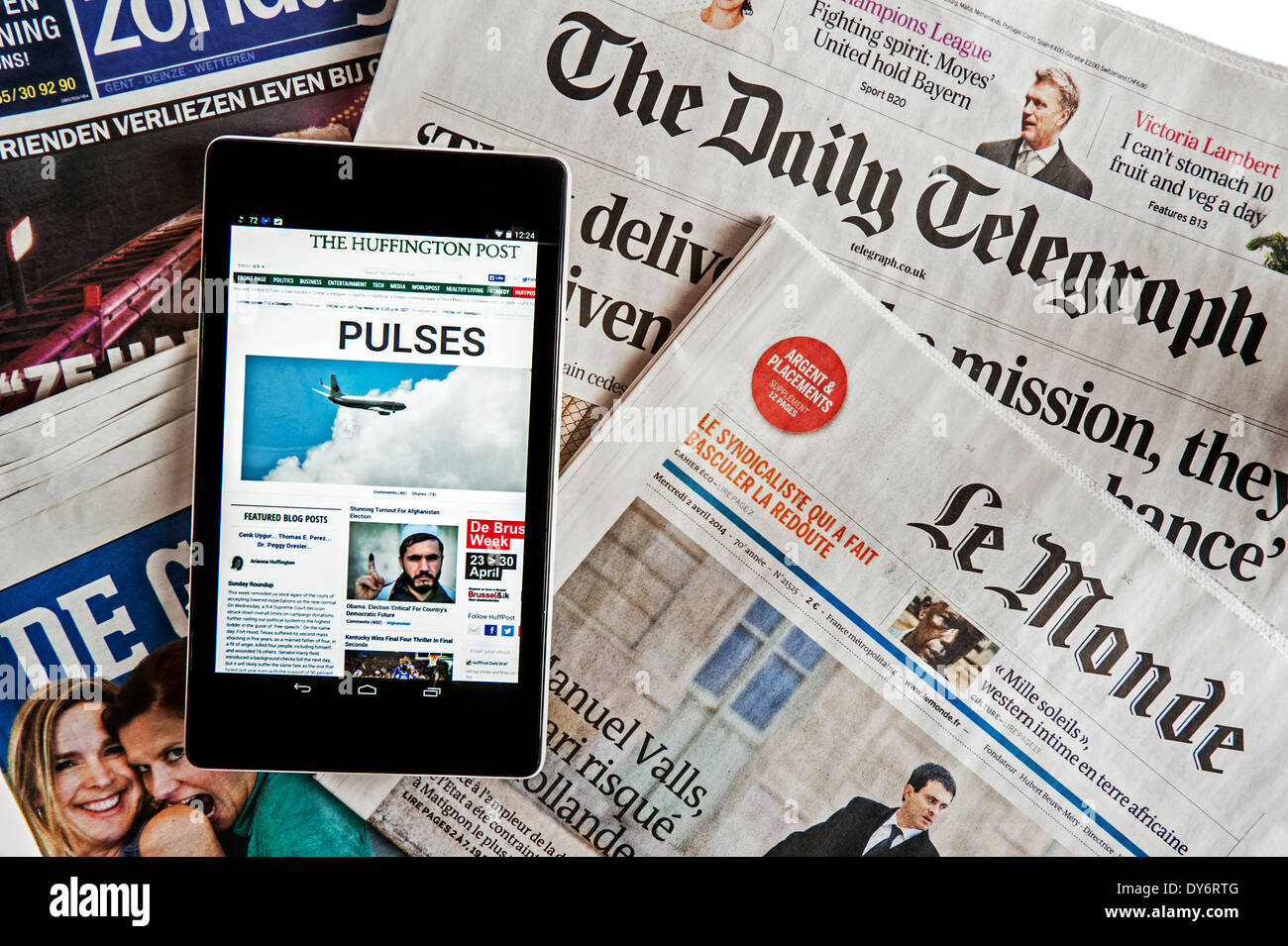How to Spot Credible Stories on stnews.live
The Influence of Social Network en route We Take In News Online
Social media site has basically transformed news consumption. It gives instant accessibility to info, usually eclipsing standard media electrical outlets. Nonetheless, this fast circulation includes challenges. Customers encounter the danger of coming across misinformation and becoming trapped in resemble chambers. The formulas driving personalized material can obscure diverse perspectives. As these dynamics develop, recognizing their effects becomes necessary for notified engagement in public discussion. What approaches might aid navigate this facility landscape?
The Evolution of News Consumption in the Digital Age
As modern technology progressed, the way individuals taken in news changed considerably in the digital age (stnews.live). Standard papers and relayed media started to decline as the net arised as a key source of details. On-line platforms provided instant accessibility to newspaper article, videos, and podcasts, enabling customers to remain informed at any kind of time. The benefit of smart phones further accelerated this change, allowing individuals to receive updates on the move
In addition, the rise of news collectors and websites assisted in the usage of diverse viewpoints, empowering users to tailor their news intake based on personal interests. This advancement likewise triggered wire service to adjust their strategies, focusing on digital content and engaging readers via multimedia layouts. Consequently, the standard obstacles of time and space in news delivery reduced, resulting in a more instant and individualized news experience for audiences worldwide.
The Duty of Social Media Operatings Systems in News Circulation
Social media systems have transformed news distribution by supplying immediate access to info. Their algorithm-driven content curation usually focuses on engagement over accuracy, resulting in substantial credibility difficulties (stnews.live). As individuals browse this landscape, the ramifications for news usage and public discussion come to be significantly complex
Instantaneous News Accessibility
Conventional news electrical outlets have long been the primary source of information, the surge of social media systems has substantially changed how news is accessed and taken in. Immediate news access has ended up being a hallmark of the electronic age, making it possible for users to receive updates in real time. Platforms such as Twitter, Facebook, and Instagram allow news to spread out rapidly, commonly exceeding conventional media in speed and reach. Individuals can share tales, talk about occasions, and involve with reporters, creating a vibrant interaction in between the audience and news material. This immediacy fosters a culture of seriousness, prompting users to inquire quickly. Consequently, the assumption for timely news has improved journalistic techniques, compelling wire service to adapt their approaches to fulfill the demands of a hectic electronic environment.
Algorithm-Driven Content
While individuals actively engage with web content on social media, the algorithms that control these platforms play a critical function in figuring out which news stories get exposure. These formulas assess customer habits, choices, and engagement metrics to curate individualized news feeds. As a result, particular stories may be intensified while others stay rare, frequently focusing on thrilling or trending topics over substantive coverage. This selective exposure shapes customers' assumptions of existing events and influences public discussion. Moreover, the dependence on algorithm-driven web content can produce echo chambers, where customers are primarily exposed to perspectives that straighten with their own ideas. Consequently, the characteristics of news circulation on social media platforms significantly influence just how people take in and analyze information in the electronic age.

Integrity Difficulties
As users progressively transform to social networks for news, the reliability of details encountered on these systems ends up being a pushing problem. The decentralized nature of social networks enables any individual to release content, often obscuring the lines between reliable journalism and misinformation. Algorithms focus on interaction over precision, leading to the extensive dissemination of thrilling or misleading stories. This environment presents significant difficulties for customers trying to recognize credible resources. Social network systems, while endeavoring to battle false information through fact-checking and web content moderation, run the gauntlet for disparities and prejudices in their approaches. Inevitably, the responsibility lies with users to critically assess the news they eat, as the quick spread of details usually surpasses confirmation efforts by platforms.
The Increase of Citizen Journalism and User-Generated Material
The rise of resident journalism has encouraged daily people to share news and viewpoints, usually supplying understandings that typical media might ignore. This shift also presents significant obstacles, especially the spread of misinformation that can emerge from unverified content. As user-generated material becomes extra prevalent, the equilibrium in between genuine voices and accuracy in coverage remains a critical problem.
Encouraging Day-to-day Voices

Difficulties of False information
While the surge of resident journalism has actually opened opportunities for diverse voices in the media landscape, it has actually also introduced considerable difficulties related to false information. The simplicity of sharing details with social media systems allows individuals to distribute news rapidly, however this fast spread usually comes with the cost of precision. User-generated content frequently description does not have the strenuous fact-checking and content oversight that traditional journalism supplies. Sensationalized or incorrect stories can get traction, misguiding target markets and shaping public assumption. The mixing of opinion and fact within social media makes complex the difference between legitimate details and misinformation. Consequently, customers have to navigate an increasingly complex media atmosphere, calling for vital thinking abilities to determine reputable news sources in the middle of the sound

False information and Its Effects for Public Discussion
As social media sites platforms progressively control the landscape of info circulation, the spreading of false information positions considerable obstacles for public discourse. False information, frequently made to deceive or prompt psychological actions, can misshape understandings of truth and weaken count on trustworthy sources. This sensation leads to polarized viewpoints, as people are attracted towards resemble chambers that enhance their ideas, even more entrenching departments within culture.
The effects for public discussion are profound. When citizens count on false info, purposeful discussion lessens, and the autonomous procedure suffers. In addition, false information can provoke anxiety and complication, influencing public health and wellness, safety and security, and political security. Therefore, promoting media literacy comes to be necessary, equipping individuals to seriously review info and recognize fact from fiction. Dealing with the challenges positioned by misinformation is critical for preserving the honesty of public discussion and making certain a knowledgeable population capable of taking part in constructive conversations.
The Impact of Algorithms on News Exposure
Offered the main role of formulas in identifying content visibility, their impact on news intake is profound. These formulas, utilized by social networks systems, prioritize specific kinds of content based upon customer interaction and choices. As an outcome, newspaper article that straighten with prominent patterns or target market interests are most likely to be shown plainly, while much less astonishing stories might be overlooked. This produces a helpful resources setting where users are subjected largely to details that enhances their point of views, possibly leading to echo chambers.
Furthermore, the continuous development of algorithms suggests that news companies should adapt their techniques to align with these altering parameters, frequently prioritizing clickbait or mentally billed headings. As a result, the honesty of news reporting can be compromised, as crucial tales may not receive the exposure they deserve. The algorithmic shaping of news visibility consequently plays a vital duty in influencing public understanding and understanding of existing events.
The Change Towards Visual Narration in News Media
Significantly, news media is embracing visual narration as a powerful tool to involve target markets. This technique leverages images, video clips, infographics, and interactive aspects to communicate information better than standard text-based layouts. As interest extends reduce, visuals provide a fast, impactful way to connect complex tales and order customers' interest.
Systems like Instagram and TikTok have additional increased this trend, compelling wire service to adjust their content strategies to fit these visually-driven settings. By incorporating engaging visuals, news electrical outlets can improve emotional connections and foster greater understanding of topical concerns.
In addition, visual storytelling enables even more diverse stories, showcasing multiple viewpoints via vibrant presentations. As target markets progressively eat news through mobile phones, the change toward visuals not just accommodates customer choices however likewise aids to damage down barriers to information gain access to. Inevitably, this development mirrors a wider change in how news is generated and consumed in the electronic age.
Future Patterns: Navigating the Transforming Landscape of News Consumption
While the digital landscape remains to advance, news intake is positioned for substantial change driven by arising innovations and altering target market habits. As expert system and machine understanding development, customized news feeds will certainly end up being extra common, allowing users to obtain content tailored to their passions. This modification can bring about higher involvement however likewise raise concerns regarding resemble chambers and misinformation.
The increase of voice-activated devices and wise speakers will influence just how news is provided, changing the emphasis from visual to acoustic formats. This trend may motivate wire service to adopt even more concise and appealing audio web content.

Regularly Asked Concerns
How Do Social Media Site Interactions Affect News Reliability?
Social network communications can considerably influence perceptions of news credibility. Interaction metrics, such as likes and shares, typically shape audience trust fund, with preferred blog posts getting perceived legitimacy, despite the accuracy or integrity of the info presented.
What Function Do Influencers Play in Shaping News Narratives?
Influencers greatly shape news narratives by leveraging their systems to amplify particular tales, often customizing content to their target market. This can bring about biased perspectives, impacting public perception and focusing on sensationalism over factual coverage.
How Can Users Identify Reliable News Sources on Social Network?
Individuals can determine reputable news resources on social media sites by inspecting the source's integrity, verifying truths via numerous electrical outlets, examining the professionalism of the web content, and acknowledging possible prejudices in reporting to ensure accurate info.
What Impact Does Social Media Have on Typical Journalism Jobs?
Social media greatly influences standard journalism jobs by altering earnings versions, reducing demand for print media, and promoting competition from person journalists. Consequently, many specialists encounter task instability and need to adapt to swiftly changing media landscapes.
Just How Do Various Demographics Consume News on Social Network?
Various demographics show diverse choices for news usage on social networks. Younger audiences prefer systems like TikTok and Instagram for fast updates, while older individuals have a tendency to choose Twitter and facebook for much more extensive conversations and posts.